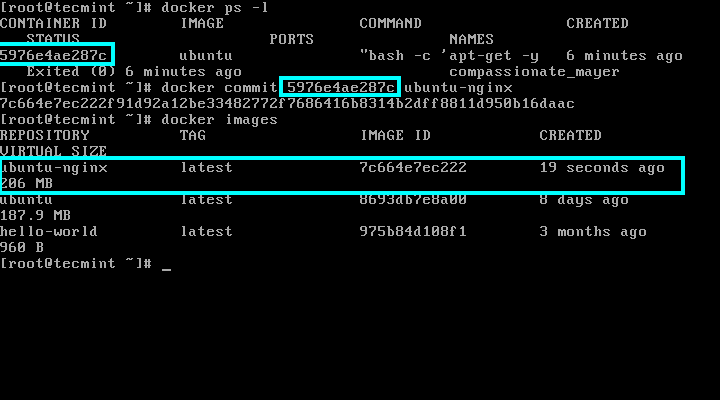
Tagged images will be included too, letting you quickly clear up old pulls from Docker Hub.

This will purge every image on your system that’s not required by at least one container.

These can be used when you only want to remove one type of resource.Īdd the -a flag to instead delete all unused images. Docker provides more granular pruning commands too. You won’t always need to use docker system prune. Any resources not matching this criteria would be left untouched. This command would delete resources with the foo=bar label that were created before 8:30pm on March 4th. To use a filter, pass it to the -filter flag: docker system prune -filter until=T20:30:00 -filter label=foo=bar You specify labels as either label=key=value (key equal to value), label!=key=value (key not equal to value), label=key (has the given label) or label!=key (does not have the given label). Labels can be used with containers, images, networks and volumes. label – The label filter constrains the deletion so only resources with a given label are deleted.1614890000) or a date formatted timestamp string (e.g. You can specify the time in several different formats, such as a Unix timestamp in seconds (e.g. until – The until filter prevents the deletion of containers, images and networks created before a given time.Two filters are currently supported, until and timestamp. Filtering gives you more control over what gets deleted. Using Filters When Pruningįilters can be used with the prune command. Each image on your system will be deleted, unless there’s at least one running container that requires it. This will cause Docker to delete all unused images, not just dangling unreferenced ones. You can delete even more image data by passing the -a (or -all) flag. If you do want to remove volumes which aren’t associated with a container, pass the -volumes flag to include them in the operation. Deleting volumes risks the loss of persistent data which you might want to keep. You can disable the confirmation by passing the -f or -force flag. Type y and press Enter to continue with the deletion. Running the command displays a confirmation prompt which lists the resource types to delete. Unless a resource is used by a running container, it will be deleted. In the case of images, an image is “dangling” if it’s untagged and has no references.ĭocker provides a single housekeeping command to let you purge all dangling resources and stopped containers. This includes Docker images, networks and volumes, as well as stopped containers. Pruning Dangling ResourcesĪ “dangling” resource is any Docker object not currently associated with a container. It also results in much lengthier output when listing resources on the command line, making it harder to find the information you’re looking for. Having too many redundant resources can quickly lead to excessive disk usage. That means images you’ve pulled and containers you’ve created are probably still hanging around on your system, even if they’re no longer used.
Docker remove container unused how to#
Here’s how to tidy them up.ĭocker doesn’t usually delete anything unless you tell it to. After using Docker for a while, you can accumulate a large number of redundant containers, images and other resources. Docker lets you quickly package your applications as containers, making it possible to run them anywhere from your laptop to a public cloud.


 0 kommentar(er)
0 kommentar(er)
